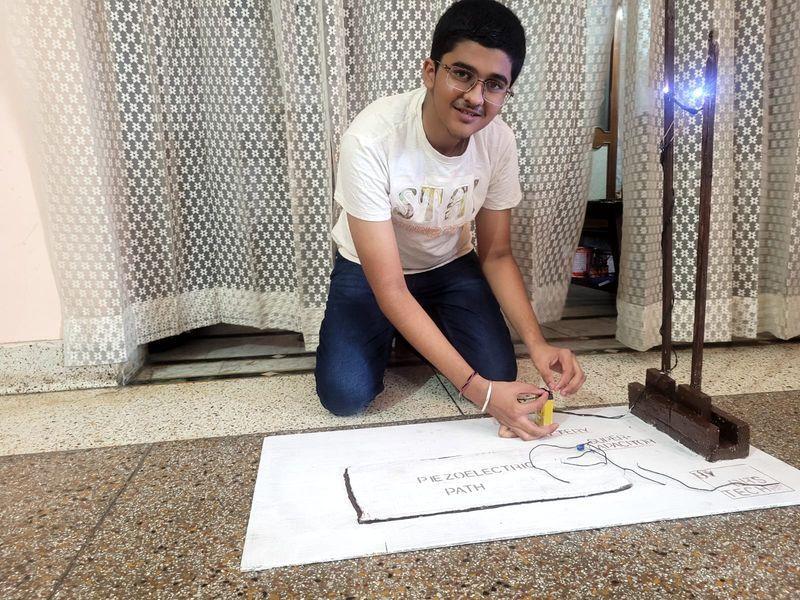
Hoshiarpur Student Builds Device to Generate Power from Footsteps
In a groundbreaking innovation that could revolutionize the way we think about power generation, a student from Hoshiarpur, Punjab, has developed a device that harnesses energy from the simplest of human activities – walking. Sanchit, a Class 8 student, has gained widespread attention from local officers, scientists, and enthusiasts with his science project, “Power beneath our feet,” which uses piezoelectric technology to convert footsteps into electricity.
Sanchit’s project is an ingenious solution to the world’s growing energy crisis. Traditional methods of power generation, such as fossil fuels, have been criticized for their environmental impact and finite nature. Renewable energy sources like solar and wind power have gained popularity, but they often rely on weather conditions and can be intermittent. Sanchit’s device, on the other hand, is capable of generating power anywhere, at any time, as long as there are footsteps to convert.
The “Power beneath our feet” device consists of a series of piezoelectric sensors embedded in a special mat or surface. These sensors are designed to convert the mechanical energy generated by footsteps into electrical energy. The device is simple, yet effective, and can be used in various settings, from homes and offices to public spaces and even wearable technology.
Sanchit’s inspiration for the project came from his curiosity about the piezoelectric effect, which is the ability of certain materials to generate an electric charge in response to mechanical stress. He began experimenting with different materials and designs, eventually creating a prototype that could harness the energy generated by footsteps.
The young inventor’s project has already caught the attention of local authorities and scientists, who are impressed by his creativity and innovative thinking. “Sanchit’s project is a testament to the power of imagination and determination,” said Dr. [Name], a local scientist who has been mentoring Sanchit. “His device has the potential to make a significant impact on the energy landscape and could be a game-changer in the field of renewable energy.”
Sanchit’s project is not just a novelty; it has the potential to be a practical solution to the world’s energy needs. As the global population continues to grow, the demand for energy is increasing, and traditional methods of power generation are struggling to keep up. Renewable energy sources like solar and wind power are becoming more popular, but they often rely on weather conditions and can be intermittent. Sanchit’s device, on the other hand, is capable of generating power anywhere, at any time, as long as there are footsteps to convert.
The implications of Sanchit’s project are far-reaching and could have a significant impact on various sectors, from healthcare to transportation. For example, the device could be used in hospitals to power medical equipment, or in public spaces to light up streets and buildings. It could also be integrated into wearable technology, such as shoes or clothing, to generate power for personal devices.
Sanchit’s project is not without its challenges, however. The device still needs to be refined and scaled up to be effective, and there are concerns about the cost and feasibility of mass production. Additionally, there are questions about the environmental impact of the device and whether it could potentially disrupt the natural environment.
Despite these challenges, Sanchit’s project is an exciting development in the field of renewable energy, and it could pave the way for new and innovative ways of generating power. As the world continues to search for sustainable solutions to its energy needs, Sanchit’s device is an important reminder that creativity and innovation can come from unexpected places.






